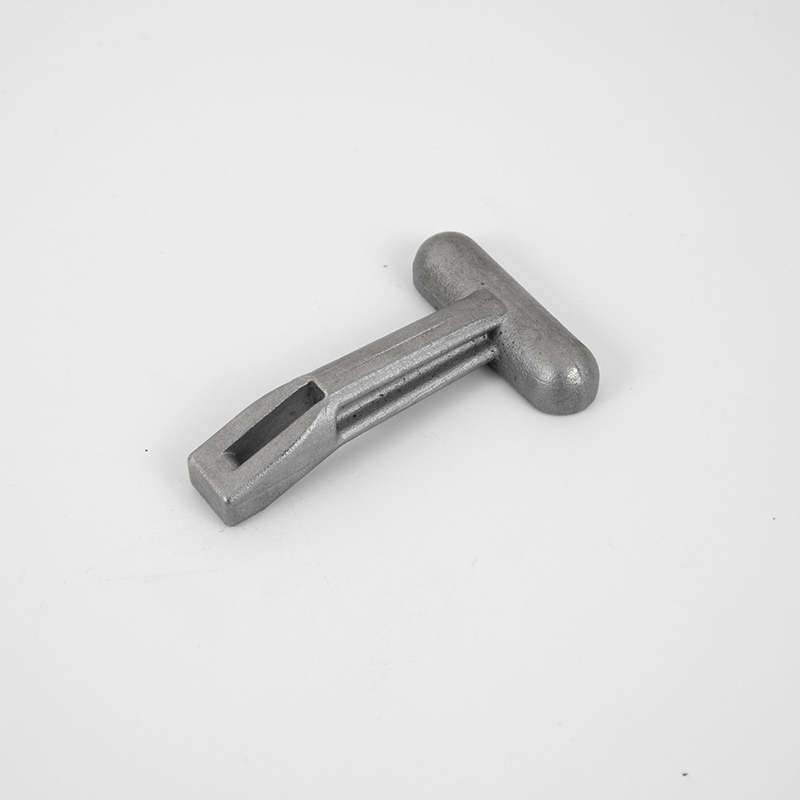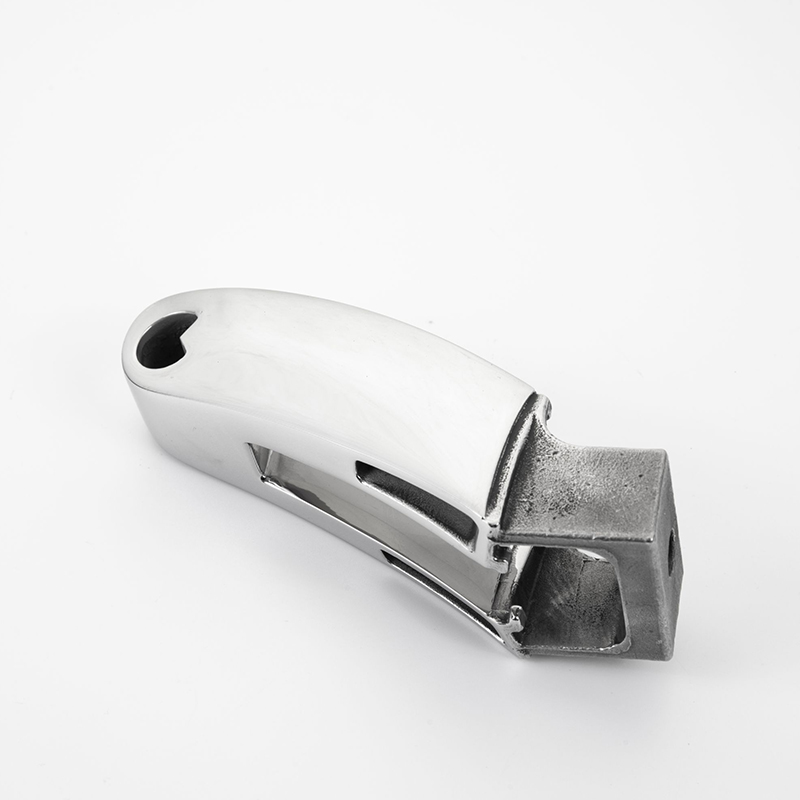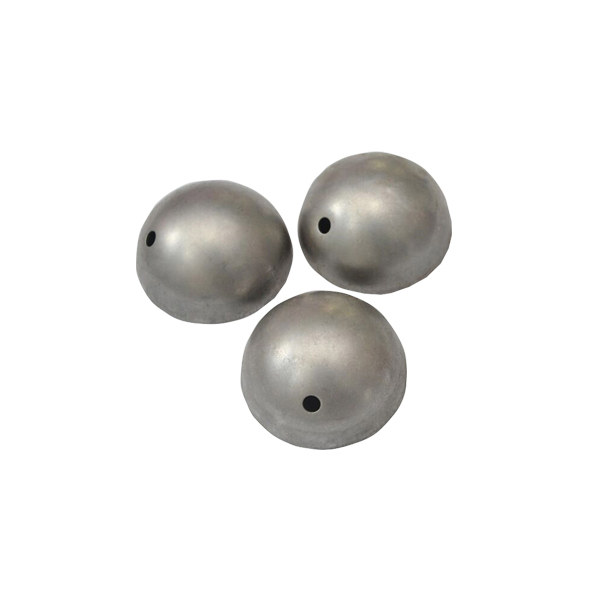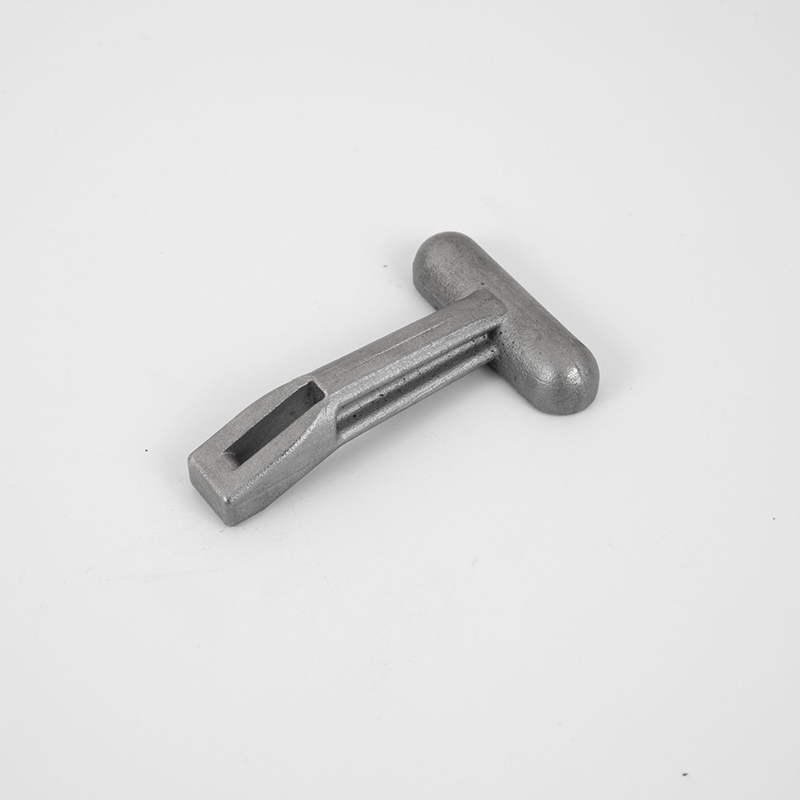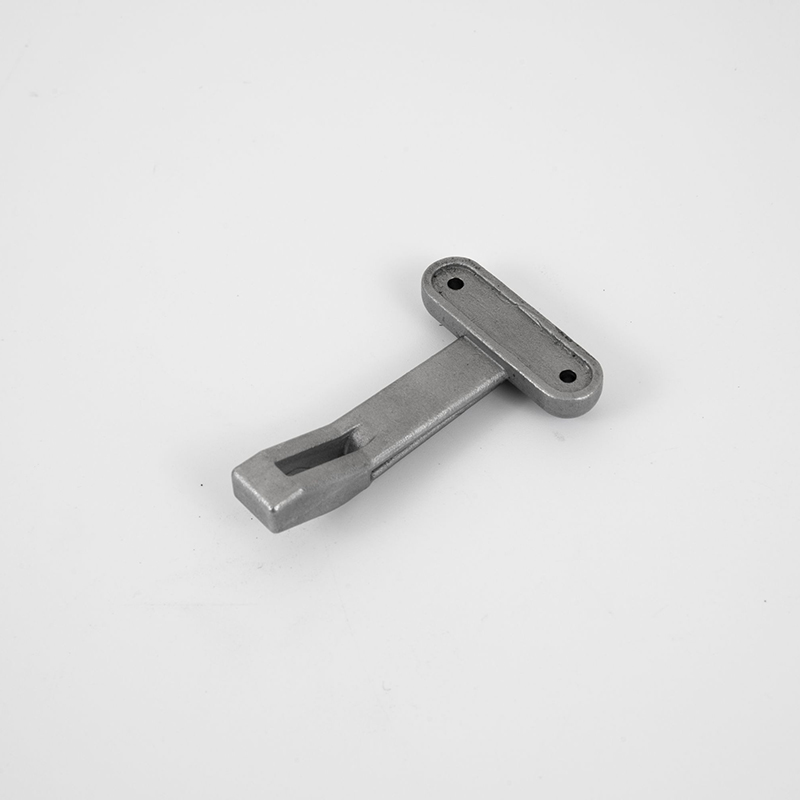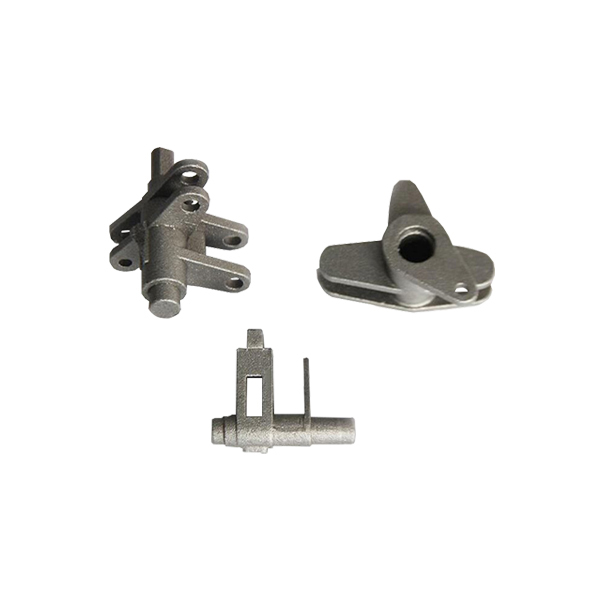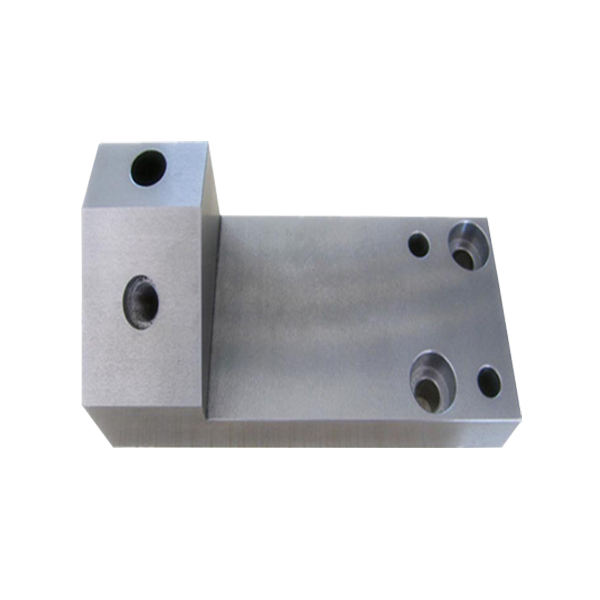Products
Ductile Iron Lost Wax Casting
High quality Ductile Iron Lost Wax Casting is offered by China manufacturer Keming Machinery. Buy Ductile Iron Lost Wax Casting which is of high quality directly with low price.Ductile iron lost wax casting is a foundry process used to produce complex-shaped iron castings with high strength, excellent ductility, and good impact resistance. In ductile iron lost wax casting, a wax pattern is made using a mold that replicates the desired part shape.
Send Inquiry
Product Description
What is Ductile Iron Lost Wax Casting?
Ductile iron lost wax casting is a type of investment casting process used to produce complex-shaped iron parts with high dimensional accuracy and surface finish. Ductile iron, also known as nodular iron, is an iron alloy that is characterized by the presence of spherical graphite nodules, which give the iron its unique properties, including high strength and ductility.
The ductile iron lost wax casting process starts with the creation of a wax or plastic pattern that is the same shape and size as the final part. This pattern is then coated with a ceramic material to create a mold around it. Once the mold is dry and hardened, the wax is melted out of the mold, leaving a hollow ceramic shell.
Molten ductile iron is poured into the ceramic shell, filling the cavity created by the melted wax. Once the iron cools and solidifies, the ceramic shell is broken away to reveal the rough iron casting. The rough casting is then subjected to finishing processes such as grinding, polishing, and heat treatment to remove any excess material and to smooth out any rough edges or surface imperfections.
Ductile iron lost wax casting has several advantages, including the ability to create highly complex parts with high dimensional accuracy and excellent surface finishes. The ductile iron produced through this process has superior mechanical properties, including high strength, excellent ductility, toughness, wear and corrosion resistance, making it ideal for use in the automotive, aerospace and industrial machinery sectors, among others.
The ductile iron lost wax casting process starts with the creation of a wax or plastic pattern that is the same shape and size as the final part. This pattern is then coated with a ceramic material to create a mold around it. Once the mold is dry and hardened, the wax is melted out of the mold, leaving a hollow ceramic shell.
Molten ductile iron is poured into the ceramic shell, filling the cavity created by the melted wax. Once the iron cools and solidifies, the ceramic shell is broken away to reveal the rough iron casting. The rough casting is then subjected to finishing processes such as grinding, polishing, and heat treatment to remove any excess material and to smooth out any rough edges or surface imperfections.
Ductile iron lost wax casting has several advantages, including the ability to create highly complex parts with high dimensional accuracy and excellent surface finishes. The ductile iron produced through this process has superior mechanical properties, including high strength, excellent ductility, toughness, wear and corrosion resistance, making it ideal for use in the automotive, aerospace and industrial machinery sectors, among others.
Why is it Called Ductile Iron Lost Wax Casting?
Ductile iron lost wax casting is called so because it uses ductile iron, also known as nodular iron, to produce parts with excellent ductility and the lost wax casting process to create the mold.
Ductile iron is a type of iron alloy that has a unique composition of carbon, silicon, and other alloying elements. The inclusion of magnesium in the alloy creates spherical graphite nodules in the material, which make it more ductile, tougher, and machinable than traditional iron alloys.
The lost wax casting process uses wax or plastic models of the final part to create a mold. The wax model is coated in ceramic material to create a shell, which is then heated to melt and remove the wax, leaving behind a cavity in the ceramic shell. Molten ductile iron is then poured into the ceramic shell to create the final part.
The name "ductile iron lost wax casting" refers to the combination of the two techniques to produce high-quality parts with excellent mechanical properties, high accuracy, and intricate designs. The use of ductile iron improves the part's ductility, while the lost wax casting process allows for precise control over the final part's shape and size.
Ductile iron is a type of iron alloy that has a unique composition of carbon, silicon, and other alloying elements. The inclusion of magnesium in the alloy creates spherical graphite nodules in the material, which make it more ductile, tougher, and machinable than traditional iron alloys.
The lost wax casting process uses wax or plastic models of the final part to create a mold. The wax model is coated in ceramic material to create a shell, which is then heated to melt and remove the wax, leaving behind a cavity in the ceramic shell. Molten ductile iron is then poured into the ceramic shell to create the final part.
The name "ductile iron lost wax casting" refers to the combination of the two techniques to produce high-quality parts with excellent mechanical properties, high accuracy, and intricate designs. The use of ductile iron improves the part's ductility, while the lost wax casting process allows for precise control over the final part's shape and size.
What is the Ductile Iron Lost Wax Casting Process?
The ductile iron lost wax casting process is a type of investment casting that involves several steps:
Pattern creation: The first step is to create a pattern of the final part using wax or plastic. The pattern is designed to be an exact replica of the final part, including any intricate details or surface features.
Mold building: The pattern is then coated with a ceramic material to form a mold around it. This mold-building process can either be done manually, where the pattern is dipped in the ceramic material, or with a modernized process that sprays the ceramic onto the pattern. Layers of ceramic are added until a thick enough layer is built up.
Wax removal: The entire mold is then placed in a furnace to melt away the wax pattern. This is where the term "lost wax" comes in, as the wax is melted away, leaving behind an empty shell.
Pouring: Molten ductile iron is then poured into the ceramic mold. The iron fills the cavity created by the melted wax, taking on the shape of the final part.
Cooling and solidification: Once the mold is filled, the iron is allowed to cool and solidify in the ceramic shell.
Finishing: Once the casting has cooled, the ceramic shell is broken away to reveal the rough iron casting. The casting is then subjected to finishing processes to remove any excess material, cores or runners, and to smooth out any rough edges or surface imperfections.
Heat treatment and inspection: Finally, the finished casting undergoes heat treatment processes and inspection to ensure it meets the required specifications.
Overall, ductile iron lost wax casting is an important process for producing complex and intricate parts with high dimensional accuracy and surface finish. The process allows for precise control over the final product's construction, making it ideal for producing parts that are difficult to manufacture using other processes.
Pattern creation: The first step is to create a pattern of the final part using wax or plastic. The pattern is designed to be an exact replica of the final part, including any intricate details or surface features.
Mold building: The pattern is then coated with a ceramic material to form a mold around it. This mold-building process can either be done manually, where the pattern is dipped in the ceramic material, or with a modernized process that sprays the ceramic onto the pattern. Layers of ceramic are added until a thick enough layer is built up.
Wax removal: The entire mold is then placed in a furnace to melt away the wax pattern. This is where the term "lost wax" comes in, as the wax is melted away, leaving behind an empty shell.
Pouring: Molten ductile iron is then poured into the ceramic mold. The iron fills the cavity created by the melted wax, taking on the shape of the final part.
Cooling and solidification: Once the mold is filled, the iron is allowed to cool and solidify in the ceramic shell.
Finishing: Once the casting has cooled, the ceramic shell is broken away to reveal the rough iron casting. The casting is then subjected to finishing processes to remove any excess material, cores or runners, and to smooth out any rough edges or surface imperfections.
Heat treatment and inspection: Finally, the finished casting undergoes heat treatment processes and inspection to ensure it meets the required specifications.
Overall, ductile iron lost wax casting is an important process for producing complex and intricate parts with high dimensional accuracy and surface finish. The process allows for precise control over the final product's construction, making it ideal for producing parts that are difficult to manufacture using other processes.
What Materials can be Ductile Iron Lost Wax Casting?
Ductile iron lost wax casting can be used to cast a wide range of materials, although it is primarily used for ductile iron. However they can also produce parts from these alloys with similar or better properties as ductile iron:
Gray iron: This is the most common iron used in casting and often cheaper to produce. It has good mechanical properties and is used in many machine parts such as cylinders, engine blocks and other machine parts.
Carbon steel: Carbon steel can be used in lost wax casting to create parts that are strong and durable. It is commonly used in industries such as aerospace, automotive, and energy.
Stainless steel: This material is known for its resistance to corrosion and is used in the food, chemical, and medical industries.
Other alloys: Other alloys include copper alloys, aluminum alloys, and nickel-based alloys, each having unique properties that make them suitable for different applications.
Overall, ductile iron lost wax casting is commonly used for producing parts with complex shapes and high mechanical properties. The choice of material depends on the specific requirements of the application, such as strength, wear resistance, and corrosion resistance.
Gray iron: This is the most common iron used in casting and often cheaper to produce. It has good mechanical properties and is used in many machine parts such as cylinders, engine blocks and other machine parts.
Carbon steel: Carbon steel can be used in lost wax casting to create parts that are strong and durable. It is commonly used in industries such as aerospace, automotive, and energy.
Stainless steel: This material is known for its resistance to corrosion and is used in the food, chemical, and medical industries.
Other alloys: Other alloys include copper alloys, aluminum alloys, and nickel-based alloys, each having unique properties that make them suitable for different applications.
Overall, ductile iron lost wax casting is commonly used for producing parts with complex shapes and high mechanical properties. The choice of material depends on the specific requirements of the application, such as strength, wear resistance, and corrosion resistance.
What is Ductile Iron Lost Wax Casting Used For?
Ductile iron lost wax casting is used to manufacture complex iron parts with high-accuracy and superior mechanical properties like ductility, strength, toughness, and wear resistance. Some common uses of ductile iron lost wax casting include:
Automotive industry: The process is used to manufacture engine blocks, exhaust manifolds, connecting rods, and other automotive parts.
Industrial machinery parts: Ductile iron lost wax casting is widely used to produce industrial machinery parts such as pumps, valves, gears, and cogwheels.
Aerospace industry: The process is used to manufacture parts for airplanes, helicopters, and missiles, such as jet engine parts, airframe parts, and turbine blades.
Energy industry: Ductile iron lost wax casting is used for making parts for the oil and gas industry such as drilling equipment, pumps, valves, and pipe fittings.
Medical industry: The process is also used for manufacturing medical prostheses like implants.
Construction industry: Ductile iron lost wax casting is used to produce cast iron products such as latches, handles, railings, pipes, and fittings that are widely used in industrial and building construction projects.
Overall, ductile iron lost wax casting is a versatile process used in a wide range of applications requiring excellent mechanical properties and complex shapes. The process is ideal for small to medium-scale production runs that require precision and high-quality castings.
Automotive industry: The process is used to manufacture engine blocks, exhaust manifolds, connecting rods, and other automotive parts.
Industrial machinery parts: Ductile iron lost wax casting is widely used to produce industrial machinery parts such as pumps, valves, gears, and cogwheels.
Aerospace industry: The process is used to manufacture parts for airplanes, helicopters, and missiles, such as jet engine parts, airframe parts, and turbine blades.
Energy industry: Ductile iron lost wax casting is used for making parts for the oil and gas industry such as drilling equipment, pumps, valves, and pipe fittings.
Medical industry: The process is also used for manufacturing medical prostheses like implants.
Construction industry: Ductile iron lost wax casting is used to produce cast iron products such as latches, handles, railings, pipes, and fittings that are widely used in industrial and building construction projects.
Overall, ductile iron lost wax casting is a versatile process used in a wide range of applications requiring excellent mechanical properties and complex shapes. The process is ideal for small to medium-scale production runs that require precision and high-quality castings.
What are the benefits of Ductile Iron Lost Wax Casting?
Ductile iron lost wax casting offers several benefits when compared to other manufacturing methods, including:
Ability to create complex parts: Ductile iron lost wax casting can be used to produce highly intricate and complex parts with close tolerances and a high level of accuracy.
High dimensional accuracy: The process results in high dimensional accuracy which allows the accurate reproduction of the pattern.
Enhanced mechanical properties: Ductile iron castings produced through the lost wax casting process offer superior mechanical properties that include high strength, toughness, ductility, and resistance to wear and corrosion.
Excellent surface finish: Parts made through ductile iron lost wax casting are smooth and have a consistent surface finish.
Versatility: The process is versatile and can be used to produce a wide variety of parts with varying sizes, thicknesses, and geometric complexities.
Cost-effective: Ductile iron lost wax casting can be a cost-effective manufacturing method for producing small to medium-scale castings.
Ability to produce near-net shapes: Ductile iron lost wax casting requires little to no secondary machining, as the castings are typically produced to near-net shape. This simplifies the post-casting process, saves time, and reduces manufacturing costs.
Overall, ductile iron lost wax casting is an efficient and effective method for producing high-quality, intricate ductile iron parts with high dimensional accuracy and excellent surface finishes. It is widely used in the automotive, aerospace, and industrial machinery industries, among others, due to its ability to produce parts with superior mechanical properties and complex shapes.
Ability to create complex parts: Ductile iron lost wax casting can be used to produce highly intricate and complex parts with close tolerances and a high level of accuracy.
High dimensional accuracy: The process results in high dimensional accuracy which allows the accurate reproduction of the pattern.
Enhanced mechanical properties: Ductile iron castings produced through the lost wax casting process offer superior mechanical properties that include high strength, toughness, ductility, and resistance to wear and corrosion.
Excellent surface finish: Parts made through ductile iron lost wax casting are smooth and have a consistent surface finish.
Versatility: The process is versatile and can be used to produce a wide variety of parts with varying sizes, thicknesses, and geometric complexities.
Cost-effective: Ductile iron lost wax casting can be a cost-effective manufacturing method for producing small to medium-scale castings.
Ability to produce near-net shapes: Ductile iron lost wax casting requires little to no secondary machining, as the castings are typically produced to near-net shape. This simplifies the post-casting process, saves time, and reduces manufacturing costs.
Overall, ductile iron lost wax casting is an efficient and effective method for producing high-quality, intricate ductile iron parts with high dimensional accuracy and excellent surface finishes. It is widely used in the automotive, aerospace, and industrial machinery industries, among others, due to its ability to produce parts with superior mechanical properties and complex shapes.
Product details


Hot Tags: Ductile Iron Lost Wax Casting, China, Manufacturer, Supplier, Factory, Customized, Made in China
Related Category
Investment Casting
Shell Mold Sand Casting
Lost Foam Casting
Water Glass Casting
Lost Wax Casting
Die Casting
Precision Machining
CNC Machining
Turning Machining
Machining Workshop
Send Inquiry
Please Feel free to give your inquiry in the form below. We will reply you in 24 hours.
